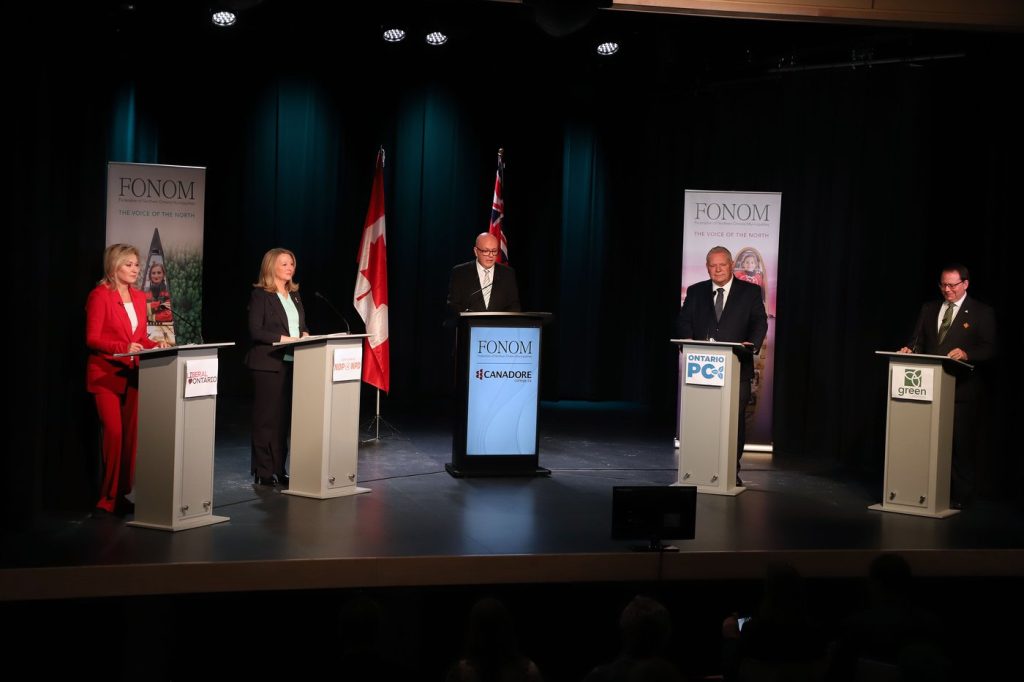Ford government allocating $21B less to fund health care, hospital capacity to shrink: FAO
Posted Mar 8, 2023 02:30:00 PM.
The Financial Accountability Office of Ontario (FAO) is out with a scathing report detailing the Ford government’s health-care spending, revealing that hospital capacity will considerably diminish by 2027-2028 due to surging demand and that the province is allocating over $21 billion less to the sector.
The FAO published the report on Wednesday ahead of a scheduled press conference by Premier Doug Ford at 10 a.m. in Pickering. It documents that Ford’s government will fail to fund current health sector programs and deliver on its program expansion commitments in hospitals, home care and long-term care.
During the COVID-19 pandemic and the ensuing health-care crisis, Premier Ford promised billions in spending to create more capacity in health care, but the FAO report concludes that the pledged increase in capacity will be offset by growing demand due to a larger and aging population.
The FAO says the province would need to add significant funding to its current health-care plan or make cuts to its programs to reach targets. The projections were released as Ontario manages a shortage of nurses and personal support workers (PSWs) — a deficit that the FAO projects to persist through its six-year forecast period.
“Even with government measures to increase the supply of nurses and PSWs, by 2027-28, the FAO projects a shortfall of 33,000 nurses and PSWs,” the report read. “These nurses and PSW shortages will jeopardize Ontario’s ability to sustain current programs and meet program expansion commitments.”
In early 2023, several Ontario hospitals registered record numbers of patients with factors at play ranging from respiratory illnesses to slips and falls commonly seen this time of year. Wait times for emergency room visits skyrocketed at hospitals across the province in the fall amid a surge in respiratory illnesses and critical staffing shortages.
The FAO’s report on the Ford government’s approach to health care further revealed that given the province’s capacity expansion pledges across the sector “will not meet [the] growth in demand for these services… [the] province has not allocated sufficient funding to the health sector to support its programs and commitments… and the province has not taken sufficient measures to supply the nurses, and PSWs needed to deliver on its expansion commitments, challenges are expected to persist across the health care system.”

According to FAO projections, health sector spending will grow at an average annual rate of 3.6 per cent between 2021-22 and 2027-28, reaching $93.8 billion in 2027-28. The FAO did note, however, that there are risks in its health-care spending projections as it assumes wage growth to be consistent with existing “collective agreements and, for new collective agreements, historical long-term average growth in wages.”
“However, given recent elevated inflation, there is the potential for above-average wage settlements, leading to higher-than-projected spending.”
Regarding hospital capacity, the FAO mentioned that given the forecasted $21.3 billion health sector funding shortfall, the province had not allocated sufficient funding to ensure an additional 4,500 hospital beds.
“Even if the province achieves its plan to increase available hospital capacity by 7,000 beds by 2027-28, the FAO projects that Ontario will still be 500 beds short of the estimated 7,500 beds needed just to serve the growth in demand for hospital services from Ontario’s growing and aging population,” the document stated.
There are more than 200,000 surgeries on Ontario’s backlog list, including nearly 12,000 children awaiting procedures.
As part of its reform efforts, the Ford government has tabled legislation that will see more cataract surgeries performed in private clinics. It is also creating a new surgical system for hip and knee replacement procedures to be done in private clinics. Premier Ford has said patients will not have to pay for the services, but critics have warned of upselling by the private clinics.
In 2022, the independent Financial Accountability Office reported that health spending per person in Ontario was $4,800 in 2020, the lowest in Canada and $536 (10 per cent) below the average of the other provinces.
The latest report comes a few weeks after Ontario and the federal government reached a 10-year deal in principle on health care. Ontario Health Minister Sylvia Jones said it would “bolster Ontario’s investments … as we implement our plan for connected and convenient care.”
Premier Ford led the charge to get more health transfers from the feds. Last month, premiers across the country agreed to Ottawa’s $46 billion offer to supplement the Canada Health Transfer. At the time, Ford called it a “good down payment.”
With files from The Canadian Press








